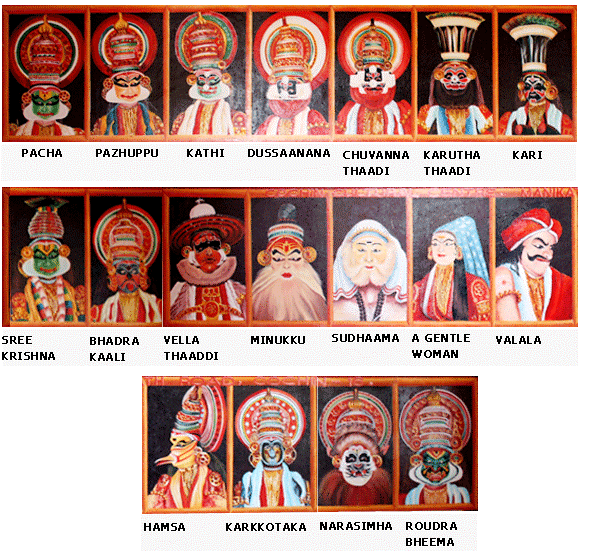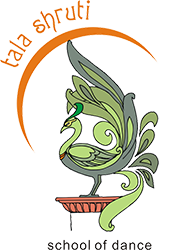Understanding Bharatanatyam as Dance and Life Through The Dhyana Sloka
An audience that understands the nuances of the sloka can better appreciate a
performance.
By Kriss Venugopal
irstly my salutation to the lineage of gurus – guru parampara.
Gurur Brahmaa Gurur Vishnnur Gururdevo Maheshvarah |
Guru saakshaath Param Brahma Tasmai Shrii-Gurave Namah ||
Guru is the creator, guru sustains and guru eliminates what needs to be destroyed. Hence the guru is the supreme soul I bow before to lead me to betterment in this life.
During my dance training in the 90’s, I was taught a shloka:
aangikam bhuvanam yasya
vaachikam sarva vaangmayam
aharyam chandra tharaadi
tvam vande satvikam shivam.

I did not learn the shloka as a religious practice, but something actually deeper. Dance is the form of expression which can really change the way you look at life or even Indian traditions.|
This is the dhyana sloka, or evoking the blessings while learning dance. Whenever we hear a shloka we tend to judge it as a Hindu ritualistic practice. However, when we look into the meaning of the shloka, we might understand why the dhyana shloka is designed the way it is. The meaning of the shloka is as follows:
Firstly, it does talk about Nataraja or the dancing Lord Shiva in its literal sense. The expression literally means “whose body is the universe and whose speech is the universal language, and the ornaments are the sun and the moon or the celestial bodies, the prayers are unto the pure form of the Lord.”
But the inner meaning looks into the four kinds of abhinaya:
aangikaabhinaya
vaachikaabhinaya
ahryabhinaya and
saatvikabhinaya.
According to Bharatha’s Naatyashashthra, the sloka portrays the basic expressions of nature and reminds us of the four ways to express while performing dance. Expressions with the body (aangikaabhinaya), expressions through the words or the sahithya of the song (vaachikaabhinaya), expressions with the ornaments or costumes (ahaaryabhinaya) and finally, the expression through purity or serenity (saatvikabhinaya). To better comprehend this, we should first clearly understand what an expression or abhinaya is. The literal meaning of the word abhinaya has been explained by Bharata as follows in a shloka:
“Abhipurvastu nindhatur abhimukhyartha isyate
Yasmat Padarthan nayati tasmad abhinayah smrtah“
‘Abhi’ is the prefix meaning ‘towards’ and ‘ni (naya)’ has the root meaning to carry. So, abhinaya means to carry towards, i.e. to carry the spectator towards the meaning. Thus, abhinaya can be called a vehicle of Natya through which the spectator experiences the particular emotions of the dramatic character that is to lead him or her towards Rasananda – the ultimate bliss of enjoying the performance, which is the aim of Natya.
To be an informed member of the audience, we have an obligation to understand the rasa, rasananda, abhinaya and the four kinds of abhinaya, and you should know where to look for these when you see a dance performance. So, here goes.
Angika Abhinaya means to convey the meaning through body movements. This involves natural as well as symbolic gestures (Mudras), postures and movements of the major and minor parts of the body, including the Mukharaga, which are expressions conveyed through the subtle movements of facial muscles. Bharata’s description of the usage of body limbs for conveying various meanings is a detailed scientific study of human behaviour. These can be observed in almost all dance forms, especially in Bharathanatyam, Mohiniyattam, Kathakali and Bharathanruthya. Mukharaga cannot be observed in certain dance forms where masks are used like the Chau, which expresses itself using the bodily movements alone. Bharatha’s Naatyashasthra elucidates three major divisions for the body: they are a) six angas (including the hands and head), b) six pratyangas (including the shoulders, thighs and feet) and c) the twelve upangas (including looks or eye movements, nose and lips). Hence, this covers the hasthabhinaya which are the hand symbols, movement and the combination of the hands and postures with positions.

Vaachikaabhinaya means to express through speech. Bharata has discussed in detail the different Vrttas, metres in poetry, the Laksanas, figures of speech, the Gunas and Dosas, the strong and weak points of poetic writing as well as diction. This essentially calls for the audience member to understand the literature and meaning of the song, to which the dancer is dancing. For a truly divine experience, the singer has to sing the song with heartfelt emotions, the dancer has to dance with the whole body, mind and soul, and the spectator has to reach the ultimate rasananda. Otherwise, it will be reduced to just watching a rote exercise. The tala and laya, or the rhythm and the flow of the song also play an important role. Choosing a raga which has an inherent quality will have its own expressions. Hence music and its understanding play an important role in the life of a dancer.
Ahaaryabhinaya means to express through costumes. Rangabhusa is the make-up costumes, ornaments etc., of the character being depicted by the dancer. It also lays out the nepathya, the stage props and decor. Bharata has prescribed specific colours, hair-styles as well as costumes for particular characters. Hence, if you are able to understand that a pacha vesham in Kathakali depicts a hero, the kari vesham a kiratha, kathi vesham villains, then you will enjoy the dance more. Similarly the dance dramas of India, gives immense importance to the rangabhusha, which becomes a part of the aharyabhinaya. However, do keep in mind, that the ornamentation is not always real in dance forms; sometimes the characters depicted are symbolically adorned with the ornaments. For example, a peacock feather for Lord Krishna, a bow for Lord Rama or a beard for a rishi and so on.

Sattvikaabhinaya is the expression through purity of the emotions of the dancer. The peculiar emotional states producing the particular physical reactions like Romancha (being exhilarated), Asru (tears as the expression of sorrow), Sveda (perspiration), Vaivarnya (change of complexion), etc. The lasya bhavam expressed in Mohiniyattam is a good example. The word satvika means what is born out of a pure mind or in Bharatha’s words Nirvikaratmakan Sattvan Bhavayan Bhava Ucyate, meaning an emotion is born out of a tranquil or serene mind. An expert dancer is able to remain calm and composed, yet generate the eight satvika bhaava as mentioned in Natyashashtra, when required.
Hence, all the four modes of expression or abhinaya are important for the right kind of performance by an artist and enjoyment by the audience. The four abhinayas also creates a special state of mind-body coordination. So, dance in Indian tradition is not just a performance but a holistic approach for a person to be a better and expressive human being.
Now that we know what the shloka evokes in the mind of the dancer, let’s also look into the word “Shivam.” The name Shiva means a lot if you look deeper. Shiva means the holy one. It also means seven, which can denote the seven notes in music, seven colors in nature and the seven rishis in Vedic literature. The Sanskrit word Shiva comes from Shri Rudram Chamakam of Taittiriya Samhita of Krishna Yajurveda. The root word śi means auspicious. He is the oldest worshipped Lord of India. Adi Sankara, in his interpretation of the name Shiva, the 27th and 600th name of Vishnu Aahasranama, (the thousand names of Vishnu) interprets Shiva to have multiple meanings: “The Pure One“, or “the One who is not affected by three Gunas of Prakrti (Sattva, Rajas, and Tamas)” or “the One who purifies everyone by the very utterance of His name.” Swami Chinmayananda, in his translation of Vishnu Sahasranama, further elaborates on that verse: Shiva means “the One who is eternally pure” or “the One who can never have any contamination of the imperfection of Rajas and Tamas“.
The abhinaya in the shloka points to the universe, the sounds of the universe or the language and the celestial bodies, Shiva is a combination of all, which means we are talking about the relation between man and nature, where Shiva is nothing but nature. Nature, prakruthi in Sanskrit, can be what is around us or inside us as our traits and attributes. Essentially, the sloka is invoking nature and giving it the name Shiva. So the dhyana sloka was never a ritualistic mantra but rather one that calls for equilibrium with nature and guides us to express ourselves better through the effective coordination of mind and body.
(Kriss Venugopal is a writer, actor and performer based in Dubai.)
